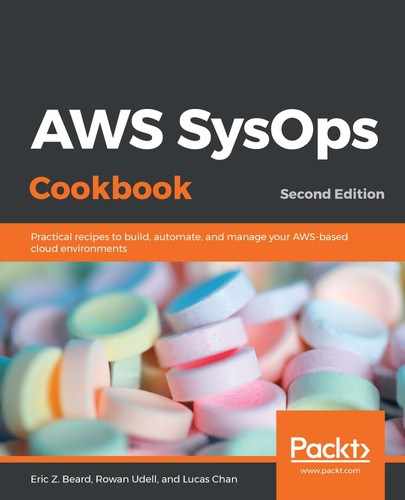Resources are your actual pieces of AWS infrastructure. These are your EC2 instances, S3 buckets, ELBs, and so on. Almost any resource type you can create by pointing and clicking on the AWS web console can also be created using CloudFormation.
It's not practical to list all the AWS resource types in this chapter. However, you will get familiar with the most common types as you work your way through the recipes in this book.
There are a few important things to keep in mind about CloudFormation resources.
New or bleeding-edge AWS resources are often not immediately supported. CloudFormation support typically lags a few weeks (sometimes months) behind the release of new AWS features. This used to be quite frustrating for anyone who found that infrastructure automation was key. Fast-forward to today, and this situation is somewhat mitigated by the ability to use custom resources. These are discussed later on in this chapter.
Resources have a default return value. You can use Ref to fetch these return values for use elsewhere in your template. For example, the AWS::EC2::VPC resource type has a default return value, which is the ID of the VPC. It looks something like this:
vpc-11aa111a
Resources often contain additional return values. These additional values are fetched using the built-in Fn::GetAtt function. Continuing from the previous example, the AWS::EC2::VPC resource type also returns the following:
- CidrBlock
- DefaultNetworkAcl
- DefaultSecurityGroup
- Ipv6CidrBlocks
- Outputs
Just like AWS resources, CloudFormation stacks can also have return values, called outputs. These values are entirely user-defined. If you don't specify any outputs, then nothing is returned when your stack is completed.
Outputs can come in handy when you are using a CI/CD tool to create your CloudFormation stacks. For example, you might like to output the public hostname of an ELB so that your CI/CD tool can turn it into a clickable link within the job output.
You'll also use them when you are linking pieces of your layer cake together. You may want to reference an S3 bucket or security group that's was created in another stack. This is much easier to do with the new cross-stack references feature, which we'll discuss later in this chapter. You can expect to see the Ref and Fn::GetAtt functions a lot in the output section of any CloudFormation template.
